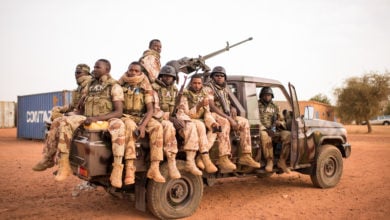Recent joint military exercises by the United States and the Philippines in disputed territories of the South China Sea have heightened tensions between the United States and China.
The two-week-long series of so-called “war games” reached its tensest moment on April 25, when U.S. and Philippine troops performed a mock assault on the island of Palawan, claimed by both China and the Philippines.
In response, China’s military issued its strongest warnings to date to the United States. Previous warnings from China had stated that any actions taken by the United States in the South China Sea would raise the risks of armed confrontation between the two countries.
“The South China Sea issue is not an issue between China and the U.S., because the U.S. doesn’t have claims over the South China Sea,” said Chinese Deputy Foreign Minister Cui Tiankai.
The annual U.S.-Philippine military exercises are part of the 1951 Mutual Defense Treaty, one of many “security alliances” forged by the United States in the Asia-Pacific region during the Cold War.
Territorial disputes in the South China Sea
The South China Sea has long been a region of contested territories. China and the Philippines, as well as Taiwan, Malaysia and Vietnam all claim parts of the area, also a former home to a U.S. Navy base at Subic Bay.
In addition to the one-third of global trade passing through it, the South China Sea also contains considerable energy reserves. It is estimated that anywhere from 4.8 to 213 billion barrels of oil and up to 3.8 trillion cubic meters of natural gas deposits are contained in the South China Sea—equivalent to the known oil reserves in Alaska and in excess of the known natural gas reserves in the Gulf of Mexico. (CNN Money, April 26)
Such vast energy resources are seen as major prizes by global energy monopolies intent on dominating access to supply in pursuit of the maximization of profit. ExxonMobil, Shell and Chevron, among others, are already drilling in the region.
ExxonMobil, currently operating in Malaysia, has so far defied warnings that the company would be banned from Chinese markets if it pursued plans to drill in Vietnam. U.S.-based Murphy Oil and Philippines-based Philex Petroleum are also actively drilling in the South China Sea. Meanwhile, in the nearby Gulf of Thailand, Shell and Chevron are pursuing drilling programs.
US imperialism intends to isolate and contain the rise of China
Despite strong evidence to the contrary, U.S. and Philippine officials claim their presence in the South China Sea has nothing to do with China.
“Never was China ever mentioned in our planning and execution,” said Philippine military commander Lieutenant General Juancho Sabban. The exercise “simply means we want to work together, improve our skills.” (Reuters, April 26)
However, the joint military exercises with the Philippine military are only one component of a developing U.S. military strategy in Asia. In an effort to contain the rise of China as a global power, the United States has been increasingly shifting military assets from the Atlantic to the Pacific, with the cooperation of its allies in the region, including the Philippines, Taiwan, South Korea and Japan.
In mid 2010, the U.S. Navy deployed newly equipped submarines to the Philippines, South Korea and the Indian Ocean island of Diego Garcia. It was the first time these assets—armed with Tomahawk missiles capable of striking anything within a 1,000-mile radius—had been deployed from U.S. ports. At the same time, the aircraft carrier USS George Washington and significant amounts of heavy weaponry were sent to South Korea. In early April this year, 2,500 additional U.S. marines were deployed to northern Australia.
It is clear the United States intends to expand its presence in the region—what U.S. Secretary of State Hillary Clinton has called a “pivot” towards Asia. In response, all revolutionaries and progressives must stand against increasing U.S. hostilities towards China and all oppressed countries struggling to maintain or achieve sovereignty.




